Chiang Mai Train Station: A Hidden Gem for Photographers
- Tatiana Mocchetti
- Jun 22
- 15 min read
Tucked just outside the city’s historic old town, the Chiang Mai Train Station may not appear on typical travel photography lists — and that’s precisely why it deserves your attention. With its long corridors of repetition, its quiet rhythm of waiting and passing, and the way light dances across its tiled floors, the station becomes more than a transit point — it’s a visual meditation.
Here, time feels slower. The rush of trains is brief, bracketed by long pauses where stories unfold: a woman folding clothes on a bench, a father shielding his son from the sun, a commuter lost in her phone under a flickering light. Every detail — from the wooden benches to the mirrored symmetry of the platforms — invites your lens to linger.
This blog post is a photographer’s guide to capturing the quiet power of this place. We’ll explore what to shoot, when to go, how to frame your subjects, and how to tell stories that feel as timeless as the station itself. Whether you shoot portraits, street scenes, or abstract compositions, the Chiang Mai Train Station offers a palette of emotion, geometry, and unexpected beauty.
1. Why Photograph Chiang Mai Train Station?
A Blend of Stillness and Movement
Most travelers pass through train stations without a second thought. But for a photographer, they offer a unique contradiction — constant potential for movement, and yet moments of deep stillness. At Chiang Mai station, this balance is especially pronounced. There may be no train for hours, but the station never stops breathing: an elderly vendor sets up her snacks, a staff member sweeps slowly across the tracks, children chase each other between pillars.
This gives you time. Time to scout your composition, to observe light change subtly across surfaces, to notice a story about to unfold.
Symmetry, Repetition, and Retro Charm
Architecturally, the station is a dream for lovers of symmetry. The roof beams stretch into a perfect vanishing point. The platforms are lined with rows of identical red and white columns. The benches — either circular or angular and wooden — become focal points in minimalist compositions.
There’s also a nostalgic aesthetic at play: the station still bears remnants of 20th-century Thailand — analog clocks, weathered signs, hand-painted warnings. If you’re drawn to textures that feel both worn and enduring, you’ll find no shortage of material here.
Try standing directly center at the platform entrance for a full-frame symmetrical shot, or offset to create visual tension between order and spontaneity.
A Scene That Changes With Every Train
Although the station can sit in near-stillness for long periods, the energy shifts the moment a train approaches. Crowds reappear. The air changes. Families gather their bags, lovers hug goodbye, staff scurry into position. It’s a brief window — often less than ten minutes — but it’s rich with emotion, movement, and expressions.
If you're shooting portraits or want to capture cinematic stills, these moments offer a goldmine of authenticity. Pre-focus your lens and frame your background — then wait for life to move through it.
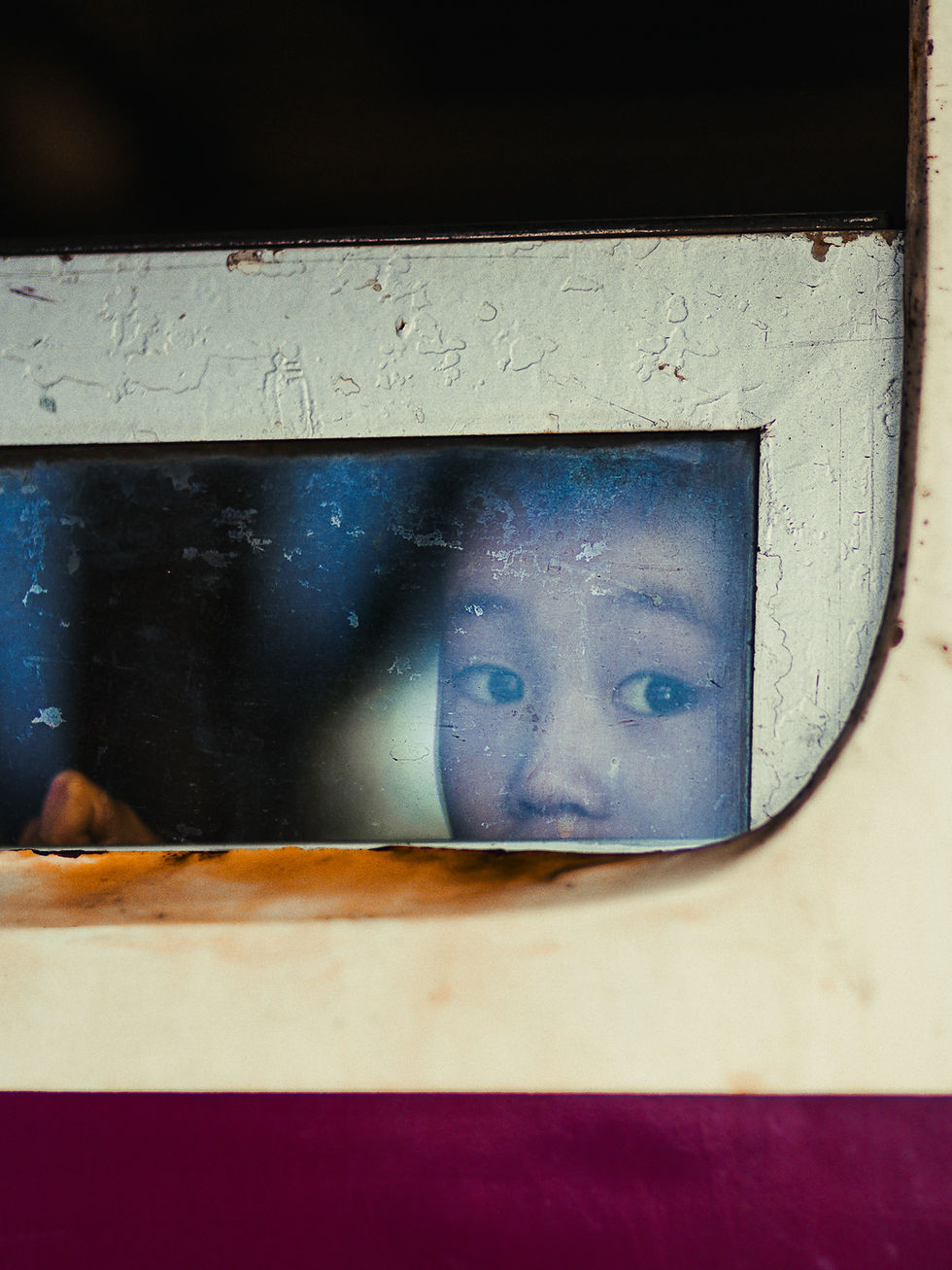
2. When to Shoot for Best Results
Early Morning Light and Long Shadows
The Chiang Mai Train Station opens up beautifully in the early morning, around 6:30 to 8:00 AM. The sunlight slants through the open platforms and casts long, golden shadows across the polished tile floors. This soft directional light enhances depth and reveals textures — ideal for moody street scenes or quiet architectural shots.
You’ll often find the station relatively empty at this hour, which allows you to experiment with symmetry, negative space, and minimalist composition without interruption. It’s also the best time for candid portraits with flattering natural light. If you’re lucky, you might catch someone stretching, praying, or reading in solitude — a frame just waiting to be taken.
Pro tip: Stand centered beneath the roofed platform and use a mid-telephoto lens to compress the lines for dramatic leading-line effects.
Afternoon Warmth and Reflections
In the mid-afternoon, especially from 3:30 PM to 5:00 PM, the light grows warmer and richer. The sun’s angle starts to hit the station from the side, giving more dimension to the pillars and stronger highlights on the benches and floor.
This is a great time to play with reflections. The floor tiles — glossy and dark — reflect both light and color, especially when the platform lanterns and rail signs catch the sun. You can use this to frame layered compositions, showing both the real and the reflected world in a single frame.
There’s also a slightly busier footfall around this time: schoolchildren arriving, vendors wrapping up, early commuters waiting for their train. It’s perfect for gentle street photography, catching people mid-interaction or pause.
Waiting Times vs. Train Arrivals
Knowing the train schedule can help you anticipate key moments. When trains arrive — typically in the early morning, early afternoon, and evening — the platform suddenly fills with people: passengers stepping off, loved ones waiting to greet them, and vendors offering snacks or water.
These brief intervals are prime time for photographing emotions: greetings, farewells, anticipation, relief. Be ready with a fast shutter speed and a flexible focal length (a 35mm or 50mm lens works great here) to move between wider storytelling and tighter portraiture.
During off-peak times, embrace the quietness. Shoot empty benches, abandoned luggage, or the symmetry of the empty tracks. These in-between moments speak of journey and solitude — a narrative often overlooked in busy stations.

3. Architectural Elements to Capture
Leading Lines of the Platform Ceiling
One of the most striking visual features at Chiang Mai Train Station is the repeating pattern of its roof beams and pillars. These architectural elements create natural leading lines that draw the eye straight to the vanishing point — a compositional gift for photographers.
Shooting from a centered perspective down the main platform emphasizes this symmetry and adds a sense of depth. You can place a subject — a person, a trolley, or a suitcase — directly in the vanishing point for a dramatic focal composition. Alternatively, let the geometry shine on its own, transforming the station into a study of pattern, space, and perspective.
Try this: Shoot wide at 18–24mm for maximal perspective distortion, or use an 85mm to compress the geometry and isolate your subject against the architectural frame.
Wooden Benches and Tiled Floor Reflections
The benches scattered along the platform — some curved, others classic wood — act as both practical objects and visual anchors. Their form contrasts with the vertical lines of the pillars, and their spacing helps break up repetitive compositions.
Don’t overlook the floor — its high-gloss surface captures light and shadow beautifully, creating subtle mirror effects that shift throughout the day. Reflections of feet, wheels, lanterns, or even shadows of passersby add another layer to your frame.
Consider shooting low to the ground to emphasize the reflective quality of the tiles. You’ll find yourself capturing more than the scene—you’ll be capturing its echo.
Hanging Lanterns and Signage Details
Suspended between the pillars are rows of colorful lanterns, a nod to Chiang Mai’s Lanna heritage. These decorative touches add vertical contrast and pops of color in an otherwise subdued color palette. They’re especially beautiful when backlit or caught in a breeze.
Framing the lanterns alone against the structural backdrop creates minimal, culturally rich compositions. Or, frame them diagonally to enhance depth. Bonus: they make great foreground elements when photographing people or trains on the platform.
Don’t forget the details: old-style signs with Thai script, worn number boards marking train lines, painted floor warnings, or even analog clocks — each adds a touch of nostalgia or local identity. These details help ground your broader compositions and enrich your storytelling.
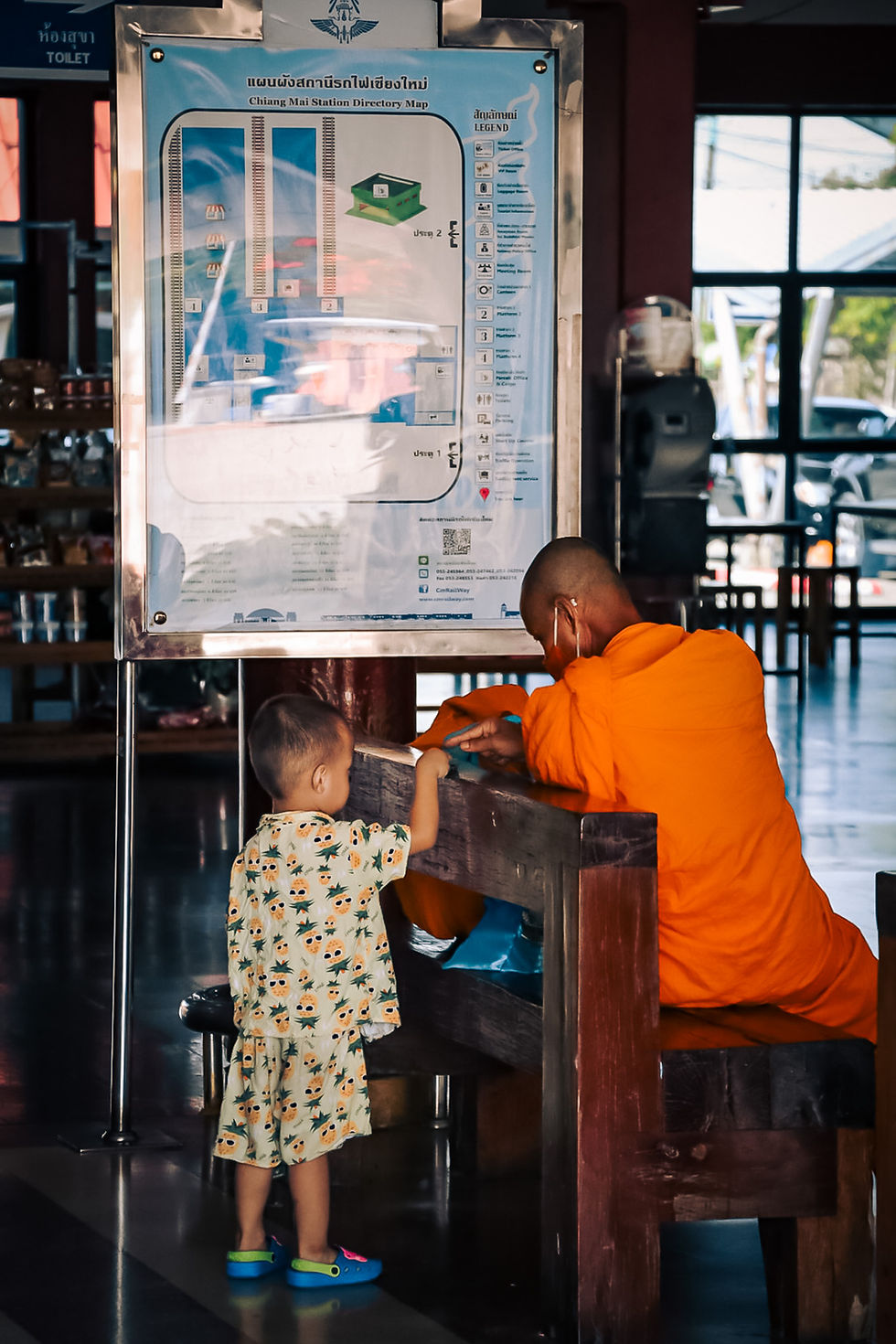
4. People and Candid Storytelling
Travelers Waiting, Walking, Interacting
While the architecture provides the frame, it’s the people who bring soul to Chiang Mai Train Station. From early morning to late afternoon, there’s a quiet choreography playing out: travelers pace the platform, chat with vendors, adjust their luggage, sip coffee, or simply sit in silence.
These fleeting moments — often unnoticed — are rich with emotional and visual depth. A woman checking her phone, a child pulling on their parent’s sleeve, a monk waiting alone, barefoot. These aren't posed or dramatic scenes, but real-life pauses that tell deeply human stories.
You don’t need to get close to be effective. Use a longer focal length (e.g., 85mm) and wait patiently. Let people move into your composition rather than chasing them. Observe. Anticipate. Let your photo be the result of presence, not intrusion.
Intimate Portraits in a Public Space
Occasionally, the station will gift you a quiet portrait moment — someone sitting on a bench lost in thought, a worker looking out over the tracks, or a couple leaning into each other during a goodbye.
If you’re comfortable engaging, a simple smile and respectful gesture can go a long way. Many Thai locals are happy to be photographed — especially when approached with humility and sincerity. Sometimes, a subtle nod is all it takes.
You can also create anonymous portraits: capturing body language, posture, and environment without revealing the face. This protects privacy while still honoring the moment.
Creative idea: Frame your subject between two pillars or in the negative space of the architecture to emphasize their place in the scene.
Everyday Rituals: Folding Clothes, Checking Phones
The station is full of small rituals that often go unnoticed — but which tell powerful stories when captured well. A woman folding her clothes neatly on the bench. A man adjusting his hat before boarding. A child drawing in the condensation on the window.
These are slow, unspectacular acts — but they embody rhythm, care, and waiting. As photographers, it’s our job to see the poetry in the ordinary. Capture these gestures with reverence. Use soft focus to isolate the motion, or a wide aperture to blur out the chaos behind them.
Shoot with intention, not just reaction. And remember: every traveler is a story in motion. Your lens gets to freeze a piece of that journey.
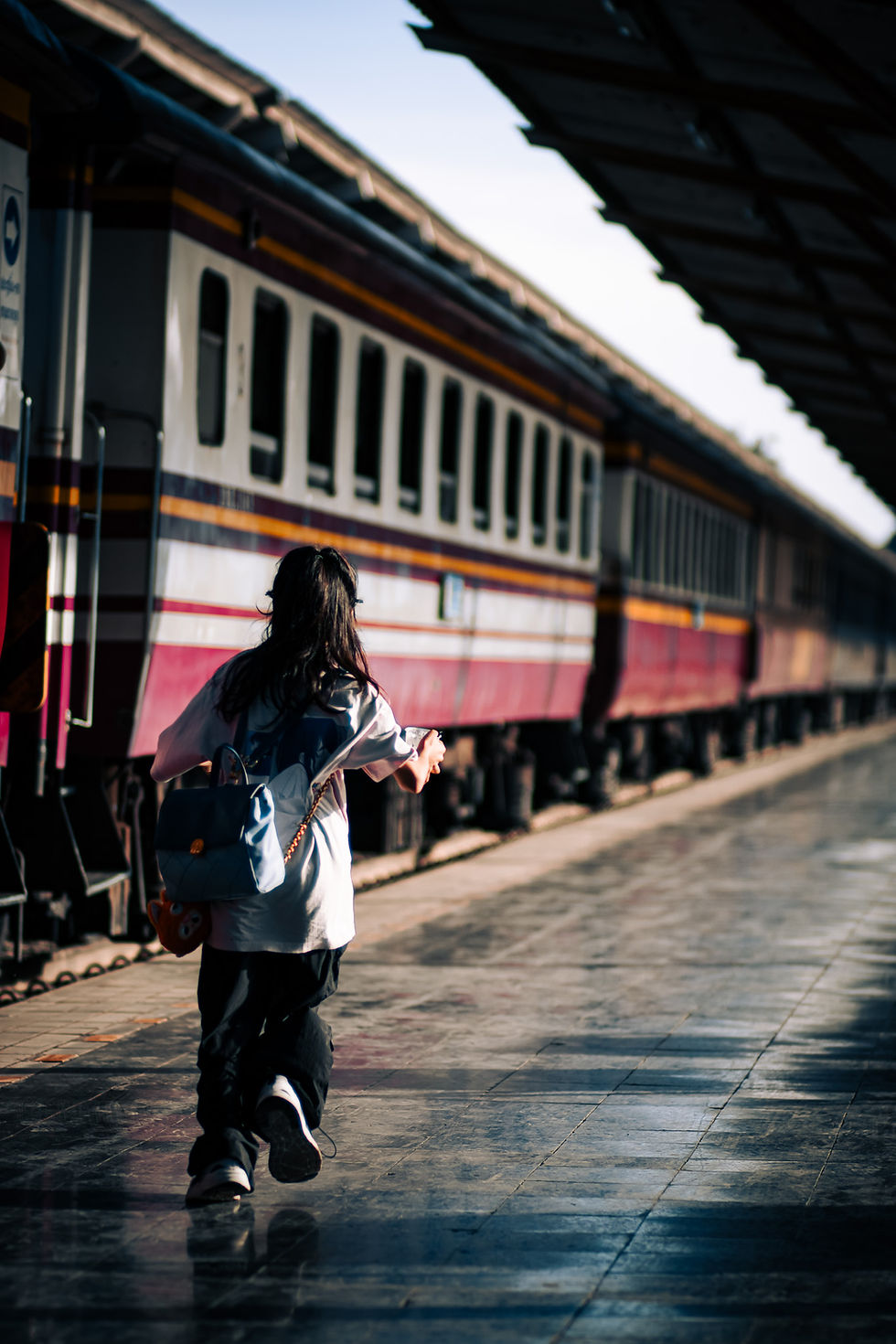
5. Playing with Light and Perspective
Shooting Into the Light for Silhouette Effect
Chiang Mai Train Station offers beautiful opportunities for silhouette photography, especially during the early morning and late afternoon hours when the sun sits low. The station’s long corridor-like platforms and open design make it easy to shoot into the light and use your subjects as striking dark figures against a bright background.
Silhouettes work well here because the structure itself — with its rhythm of beams and pillars — helps frame your subject in a natural grid. A lone figure walking toward the light, a couple standing still in a halo of morning glow, or a commuter paused under a beam of sunlight: all create emotionally powerful frames.
Camera tip: Meter for the background to darken the subject, shoot at a lower ISO, and use a narrower aperture (f/8 or higher) for sharp architectural lines.
Using Symmetry and Depth for Dramatic Shots
The station’s central perspective lines are perfect for symmetrical compositions. Standing directly in the middle of the platform walkway gives you a strong vanishing point — ideal for dramatic framing.
Try experimenting with depth by including multiple planes of interest: a subject walking down the corridor, someone seated mid-frame, and details in the far background. Use a 35mm lens for environmental context or an 85mm to compress the space and make everything feel more intimate and layered.
Adding motion blur (for someone walking or a train pulling in) also creates depth and tension. Use slower shutter speeds like 1/30 or 1/15 if handheld (or slower with a tripod) to blur movement while keeping your architectural elements sharp.
Bokeh and Subject Isolation Opportunities
The interplay of foreground and background at the station gives you plenty of chances to isolate subjects — especially when working with wide apertures like f/1.8 or f/2.0. Whether it’s someone leaning against a pillar, or a detail like a hand resting on a suitcase, you can create minimalist, focused compositions that invite curiosity.
To enhance the bokeh, shoot through foreground elements like benches, railings, or even other people — adding depth and context to your shot. This technique is particularly useful for creating more intimate portraits without needing to interrupt your subject.
Look for contrasting textures: soft human skin against hard concrete, colorful fabric against neutral architecture. The frame doesn’t always need to be full of action; often, a single detail — captured with softness and care — says more.
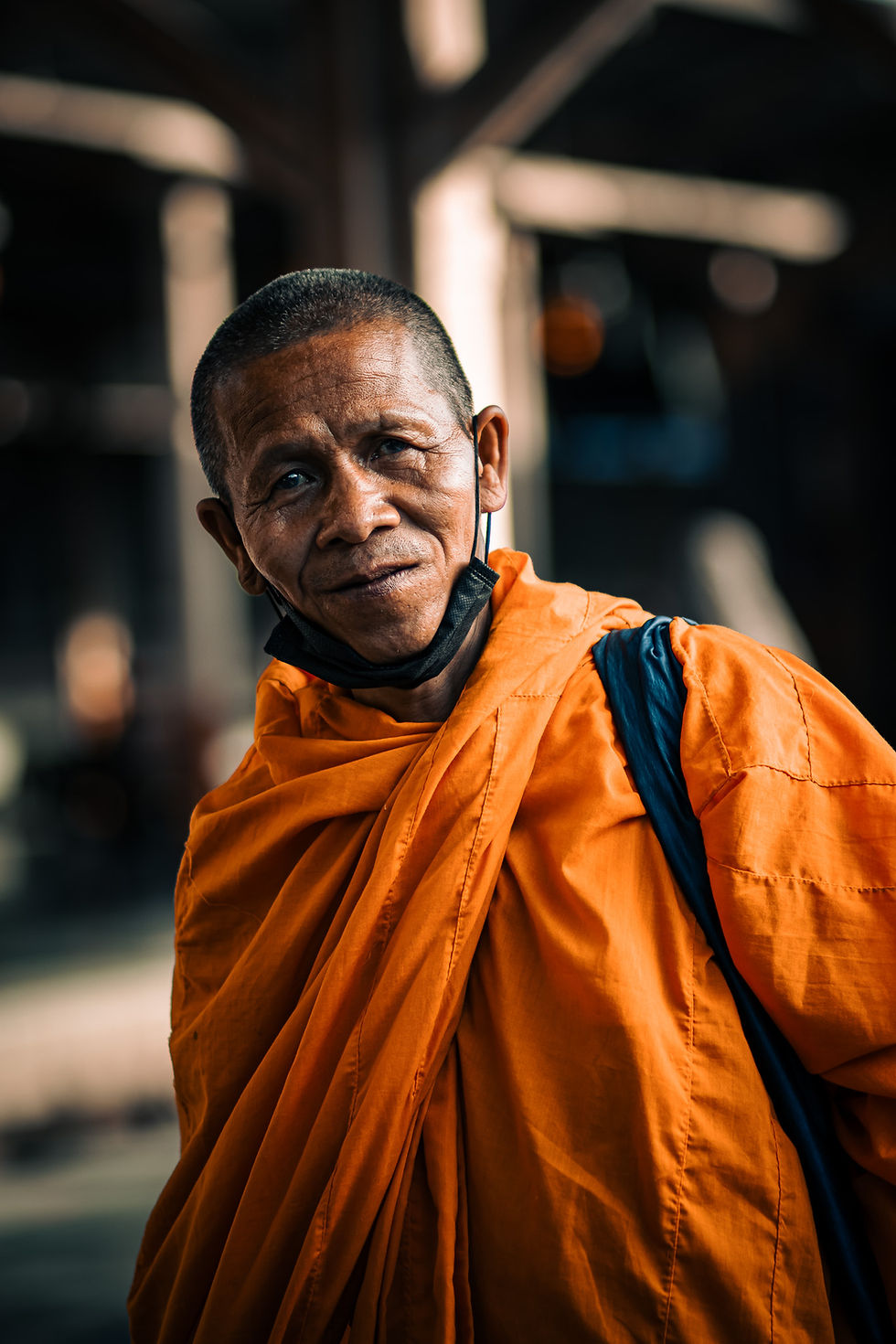
6. Suggested Lenses and Settings
85mm for Storytelling Portraits
If you're drawn to capturing quiet portraits and candid human moments, the 85mm is your best friend at Chiang Mai Train Station. It allows you to work from a respectful distance while maintaining strong subject isolation and soft backgrounds — especially useful for highlighting gestures, facial expressions, or moments of stillness.
This focal length also compresses the scene, drawing background elements (like repeating pillars or hanging lanterns) closer to your subject for a tighter, more cinematic feel. Perfect for those reflective portraits of someone gazing down the tracks or folding clothes on a bench.
Recommended settings:
Aperture: f/1.8–f/2.8 for soft backgrounds
Shutter speed: 1/250 or faster for handheld portraits
ISO: Adjust to light — early mornings may need 400–800
35mm for Environmental Context
The 35mm lens is ideal for embedding your subjects within their environment — showing not just the person, but the place around them. You’ll capture the station’s architectural lines while keeping the human element front and center.
With 35mm, you can shoot a commuter standing under the repeating pillars, or a vendor arranging goods with the lanterns above — giving your audience a sense of space, culture, and mood.
It’s also perfect for storytelling series: use this focal length to document a small sequence — someone arriving, waiting, then boarding the train.
Pro tip: Step slightly to the side of symmetry to create tension and draw the eye across the frame.
Manual Settings for Backlit or Low-Light Scenes
The station presents a mix of harsh backlight during sunrise and softer, indirect light in shaded areas — meaning auto modes often get confused. Manual settings give you full control over exposure and mood.
For backlit scenes or silhouettes:
Shoot wide (f/5.6–f/8) for architectural sharpness
Spot-meter for the background to darken the foreground
Increase contrast in post to enhance lines
For indoor/low-light scenes:
Use higher ISO (up to 1600 on modern cameras)
Open aperture (f/2–f/2.8) to let in more light
Keep shutter speed at 1/60 or faster to avoid blur
Consider using manual focus when light hits reflective surfaces — autofocus may struggle on the polished floor or glass.
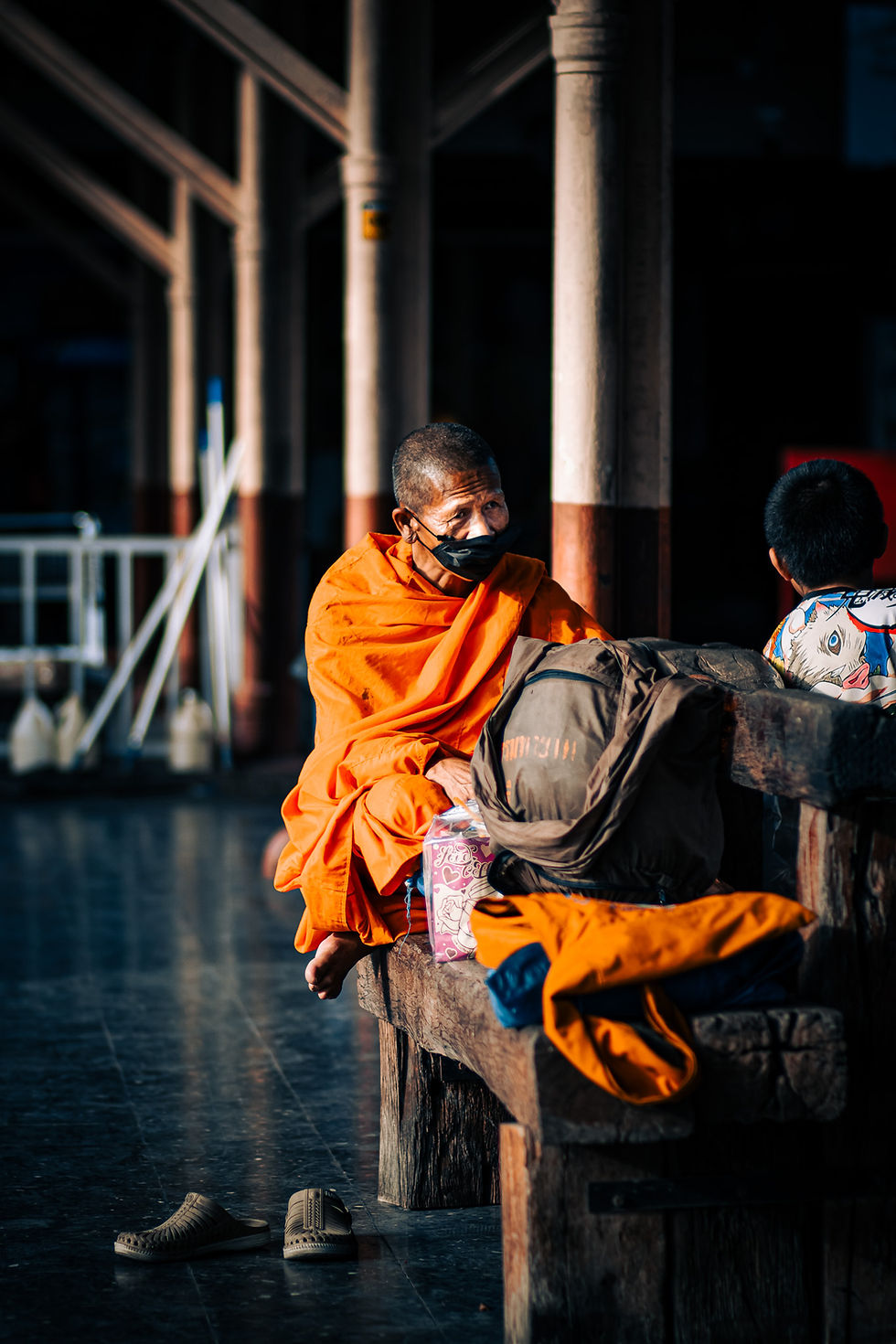
7. Respect, Privacy, and Etiquette
Asking for Permission
Thailand is often described as the “Land of Smiles”, and indeed, many people are welcoming toward photographers — especially when approached with kindness and humility. But a train station is a vulnerable space. People are often in transition, tired, emotional, or simply not in the mood to be photographed.
When you spot someone you'd like to photograph, especially for a portrait or a clearly framed moment, consider simply making eye contact, offering a soft smile, or gently gesturing toward your camera. If the person smiles or nods — that’s often enough. If they look away or seem uncomfortable, move on respectfully.
Some of the strongest images are born not from stealth but from trust. Even a subtle, shared moment of acknowledgment can elevate a shot from good to meaningful.
Candid vs. Posed Balance
Photographing candidly at the station often means embracing the natural choreography of people going about their day. But be mindful not to cross the line into intrusion. There's a difference between capturing a scene and exploiting someone's private moment.
Ask yourself:
Is this moment respectful?
Would I feel comfortable being photographed like this?
Am I honoring the story, or simply using it?
There’s room for both approaches: candid moments and gentle portraiture. A good practice is to mix wider, more anonymous storytelling shots with the occasional intimate portrait (with permission).
Ethical tip: Avoid photographing people in distress or discomfort unless you have a meaningful reason and their consent.
Being Present, Not Intrusive
Photographing at the station is not just about what’s in the frame — it’s about how you show up. Move slowly. Stay curious. Blend in. Sometimes the best way to earn a photo is simply to sit, observe, and wait for the moment to find you.
Avoid rapid-fire shooting. Be deliberate. Let the shutter release mirror the stillness of the space. You'll likely discover that the station opens up more generously when you're not rushing to take, but open to receiving.
And remember — your presence becomes part of the scene. Make it one that brings calm, not disruption.
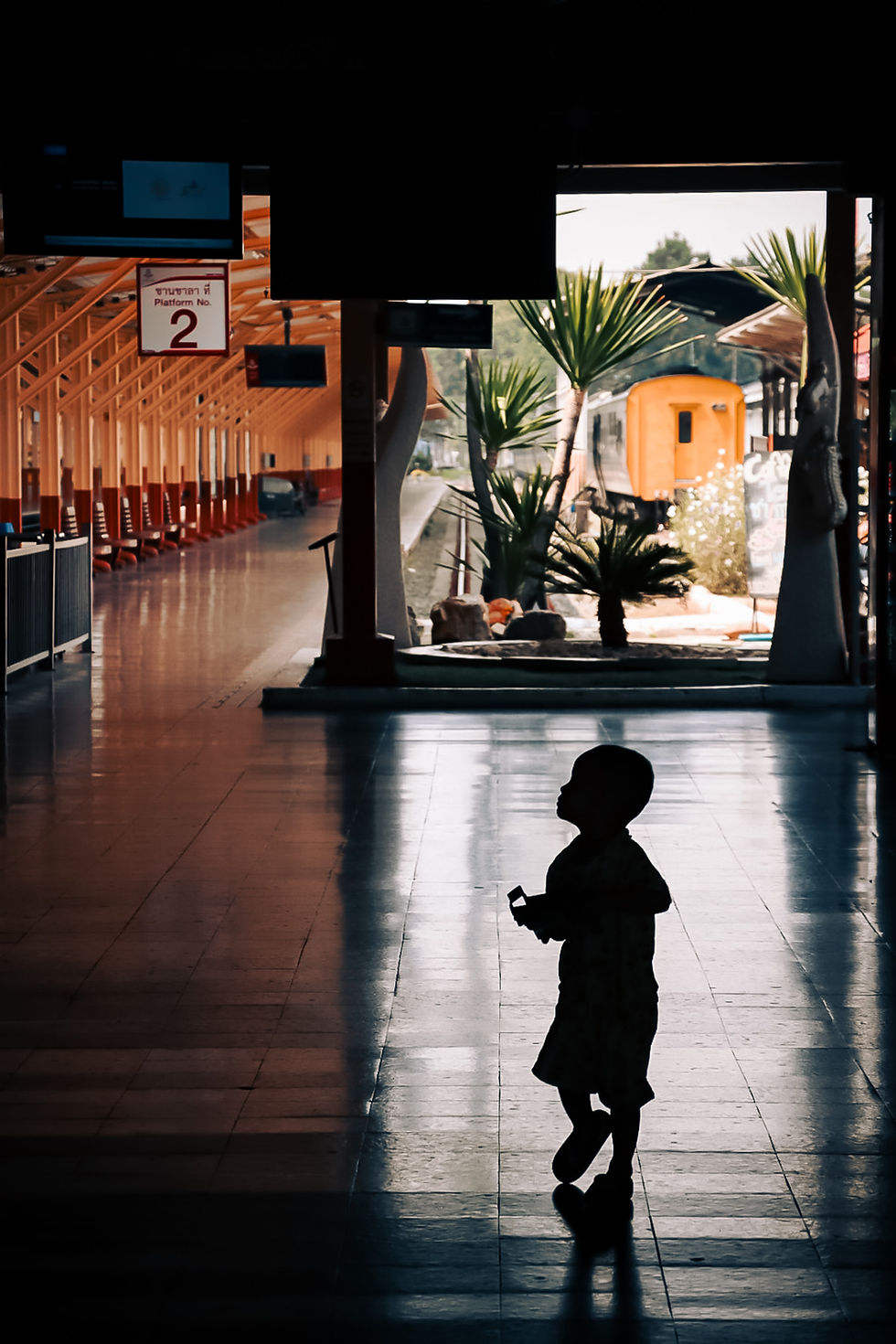
8. From Capture to Print
Editing Tones for Mood
Once your images are captured, the editing process becomes a chance to refine the emotional tone of your work. Chiang Mai Train Station lends itself well to both warm nostalgic palettes and moody black and white.
If you’re working in color, consider enhancing the natural warmth of the afternoon sun or amplifying the cool stillness of the early morning tiles. Reduce highlights to preserve detail on the floor and pillars, and slightly deepen the shadows to enhance contrast and depth.
For black and white edits, focus on contrast and structure. The station’s architectural repetition and light play benefit from clarity boosts and grain — evoking timelessness and solitude. Lightroom’s “Soft Silver” or “Classic Chrome” profiles work beautifully here.
Pro tip: Keep a consistent look across a series to build narrative cohesion — a subtle desaturation or repeated tonal choice can turn scattered moments into a unified story.
Selecting Images for Storytelling Sets
Not every photo needs to stand alone. Some of your strongest visual impact may come from grouping images that tell a sequence or explore a theme — like “Waiting,” “Departure,” or “Crossing Paths.”
Think in terms of photo essays:
A wide shot of an empty bench
A closer shot of someone folding clothes
A detail of a child’s feet dangling over the edgeTogether, they tell a quiet but complete story.
Curating small sets of 3–5 images helps show not just what the station looks like, but how it feels.
Printing Tips for Depth and Texture
If you decide to print your work — for an exhibition, portfolio, or personal collection — choose paper textures that enhance your visual intent.
For black and white:
Go for matte or fine art textured paper (like Hahnemühle Photo Rag or Epson Cold Press) to emphasize depth, grain, and emotional tone.
For color:
Semi-gloss or luster paper retains the richness of warm tones and handles shadows beautifully — especially in reflective scenes.
Framing can elevate your presentation. Consider pairing simple black or wood frames with white borders to keep the focus on the photograph.
Whether you’re printing for others or for yourself, holding your image in your hands — especially one created in such a quiet, layered place — is a deeply satisfying part of the creative process.
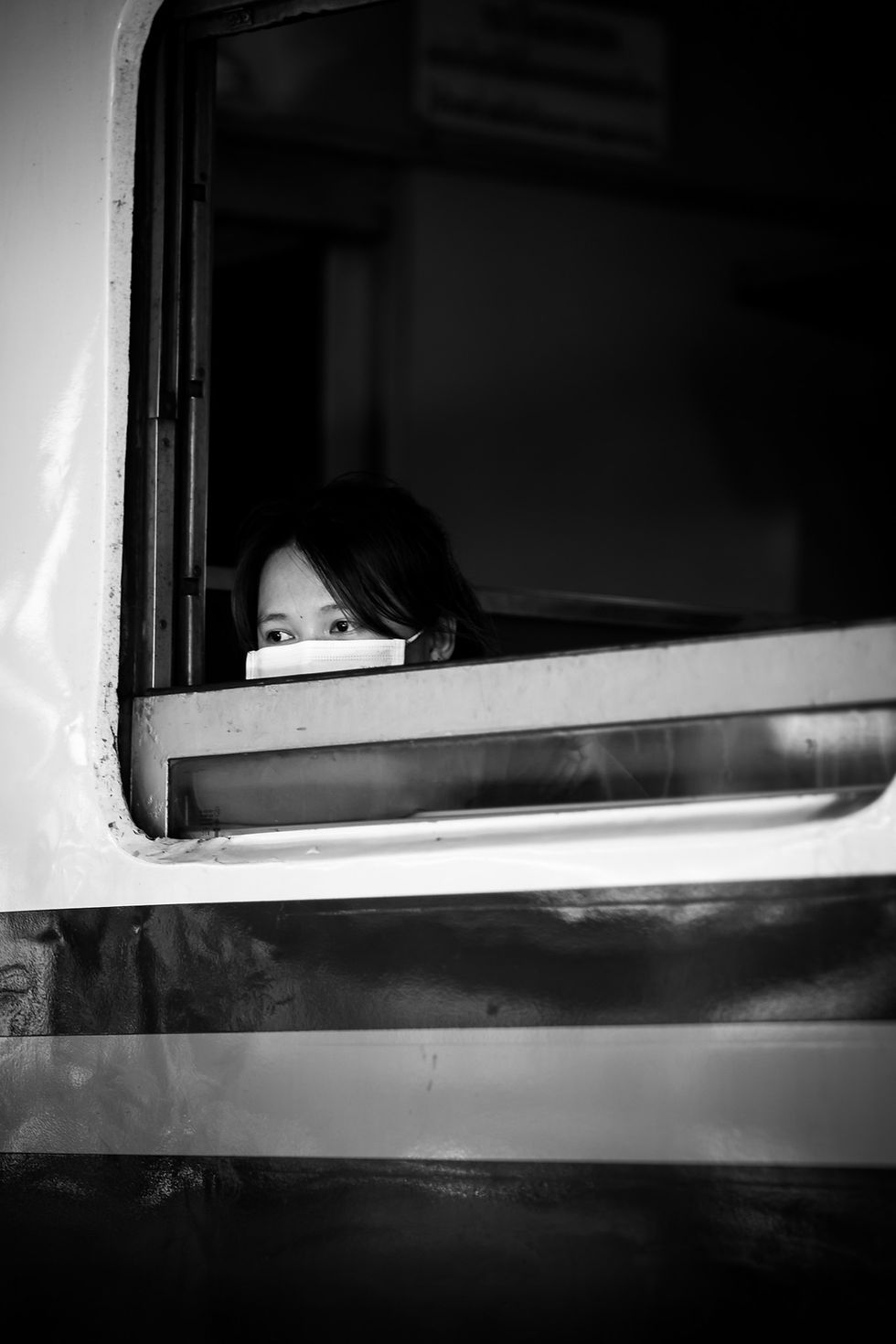
9. Quick Takeaways
Chiang Mai Train Station is a quiet, visually rich setting perfect for photographers seeking storytelling, geometry, and emotion.
Early mornings offer soft golden light and empty platforms — ideal for symmetry and solitude.
Mid-afternoons bring reflections, human rituals, and layered compositions.
Use focal lengths like 85mm for intimate portraits and 35mm for environmental storytelling.
Respect your subjects. A quiet nod or a shared moment can make for stronger, more meaningful photos.
Focus on small moments — folding clothes, waiting, walking — that reflect the rhythm of travel.
Consider creating series or print sets to elevate your images beyond digital sharing.
10. Conclusion: Where Stillness Meets Story
Chiang Mai Train Station is not a grand landmark or a bucket-list location. But perhaps that’s what makes it so powerful. In its quiet, worn corridors, you’ll find stories unfolding not with spectacle, but with sincerity — the kind that reward patience, attention, and empathy.
For photographers, it’s a place to slow down. To practice seeing, not just snapping. To explore how light slides across a tile, how a bench becomes a stage, or how a child’s hand tucked in a parent’s palm can tell more than words.
As the trains come and go, so too do the moments — some gone in an instant, others lingering in memory. Your role, camera in hand, is to pause time just long enough for others to feel what you felt.
11. Frequently Asked Questions
Q1: Is Chiang Mai train station safe to photograph alone?Yes, it’s generally safe and calm. Early mornings and late afternoons are peaceful. As always, keep your gear close and be mindful of personal belongings.
Q2: What's the best time of day for photography at the station?Golden hour — especially 6:30–8:00 AM — offers the best light, while mid-afternoon provides rich color and reflections.
Q3: Do I need a permit to shoot professionally at the station?If you're using a tripod or creating commercial work, it’s respectful to speak with station staff. For casual photography, no permit is typically required.
Q4: What are good lenses to bring?An 85mm lens is perfect for intimate storytelling; a 35mm works well for environmental portraits and capturing the station’s symmetry. A zoom lens (24–70mm) adds versatility.
Q5: Can I photograph people at the station?Yes, but do so respectfully. Candid street photography is common, but always honor privacy and body language. When in doubt, ask or offer a smile.
🚉 Chiang Mai → Bangkok Train Departures
Train Type | Train No. | Departure (Chiang Mai) | Arrival (Bangkok Krung Thep Aphiwat) |
Special Express | 7 | 06:30 | 19:30 |
Special Express | 8 | 08:50 | 18:40–18:55 (siamtickets.com, thaitrainguide.com) |
Rapid | 52 | 15:30 | 05:10 (+1 day) |
Sleeper Special Express | 14 | 17:00 | 06:10 (+1 day) |
Sleeper Special Express | 10 | 18:00 | 06:50 (+1 day) |
Sleeper Special Express | 9 | 18:00 in some schedules* | 07:15 (+1 day) |
Sleeper Special Express | 13 | 19:35 | 08:10–08:40 (+1 day) |
Express | 51 | 22:00 – 22:30 | 12:10 (+1 day) |
🔍 How to Use This for Your Photo Planning
Early mornings (06:30 departure): Capture pre-dawn blue light symmetry and quiet loneliness.
Daytime departures (08:50 & 15:30): Ideal for catching lantern light and crowd interaction in warm afternoon tones.
Overnight overlap trains (18:00 onward): Blend twilight with sleepers boarding — perfect for long exposures, silhouettes, and emotional farewells.
Late night (22:00): Great for capturing empty platforms and reflective lighting under artificial lights.
🚉 Bangkok → Chiang Mai Train Arrivals
Train Type | Train No. | Departure (Bangkok) | Arrival (Chiang Mai) |
Special Express | 7 | 08:30 | 19:30 |
Rapid | 109 | 13:45 | 04:05 (+1 day) |
Special Express (Sleeper) | 9 | 18:10 | 07:15 (+1 day) |
Special Express (Sleeper) | 13 | 19:35 | 08:40 (+1 day) |
Express | 51 | 22:00 | 12:10 (+1 day) |
📸 Photo Tips for Arrivals
Train No. 7 at 19:30: Capture golden-hour light with arriving passengers stepping onto the platform — a mix of fatigue and anticipation.
Overnight trains (109, 9, 13, 51): Great for early morning lighting, emotion-filled greetings, and quiet, foggy atmosphere.
Morning arrivals (07:15–08:40): Pair well with soft morning tones, symmetry shots, and commuter movement.








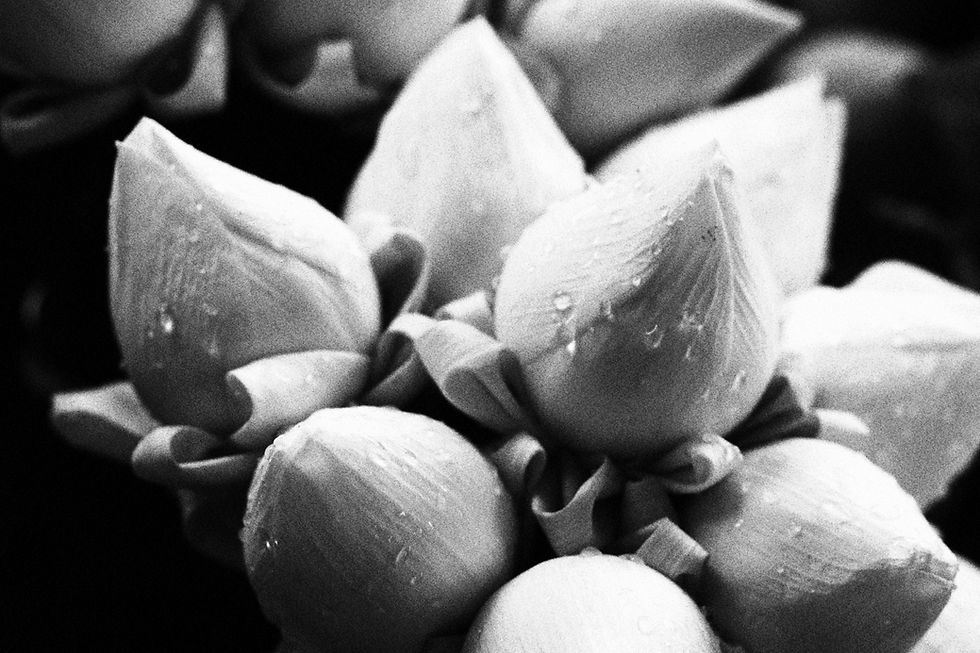


Comments